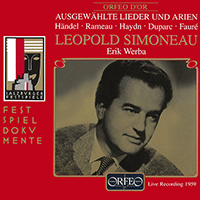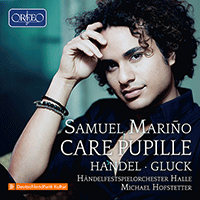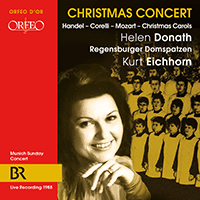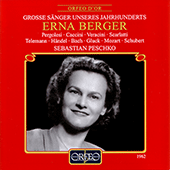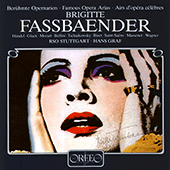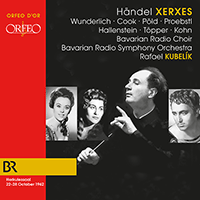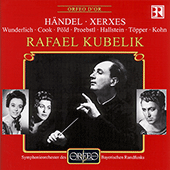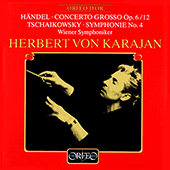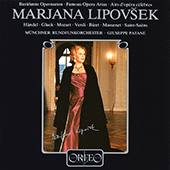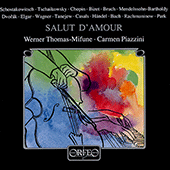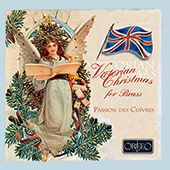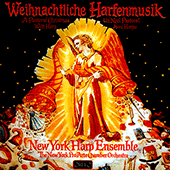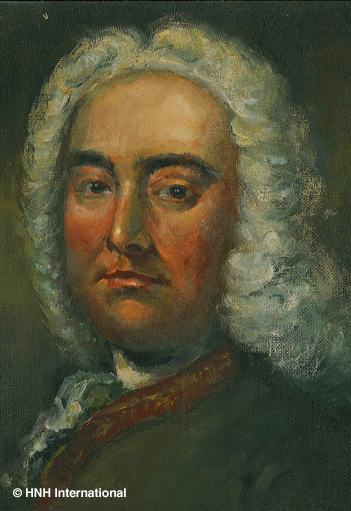
George Frideric Handel (1685 - 1759)
Born in the German town of Halle in 1685, Handel studied briefly at the University of Halle before moving to Hamburg in 1703, where he served as a violinist in the opera orchestra and subsequently as harpsichordist and composer. From 1706 to 1710 he was in Italy, where he further developed his mastery of Italian musical style. Appointed Kapellmeister to the Elector of Hanover, the future George I of England, he visited London, where he composed the first London Italian opera, Rinaldo, in 1710 and settled two years later. He enjoyed aristocratic and later royal patronage, and was occupied largely with the composition of Italian opera with varying financial success until the 1740s. He was successful in developing a new form, the English oratorio, which combined the musical felicities of the Italian operatic style with an increased role for the chorus, relative economy of production, and the satisfaction of an English and religious text (elements that appealed to English Protestant sensibilities). In London he won the greatest esteem and exercised an influence that tended to overshadow the achievements of his contemporaries and immediate successors. He died in London in 1759 and was buried in Westminster Abbey in the presence of some 3, 000 mourners.
Operas
Handel wrote over 40 Italian operas, the majority for staging in London. The operatic conventions of the time, restricting subject and form, and the major use of castrato singers in the principal male roles led to a general neglect of this important part of Handel’s work, but the increased cultivation of male soprano and male alto voices and a growing understanding of Handel’s achievement within the limitations of the genre generated a renewed appreciation in recent years. Arias and other operatic excerpts, however, have retained a continued place in vocal and to some extent instrumental repertoire. In particular an aria from the opera Serse of 1738 ‘Ombra mai fù’, popularly known as Handel’s ‘Largo’, has reappeared in every possible arrangement. Other arias are familiar in something approaching their original form. These include ‘Lascia ch’io pianga’ (‘Let me weep’) from Rinaldo, Handel’s first opera for London, [ the purple text is redundant, already mentioned in the previous paragraph ] ‘Piangèro la sorte mia’ (‘I shall lament my lot’) from Giulio Cesare and ‘Care selve’ (‘Dear woods’) from Atalanta.
Oratorios
Messiah is by far the best known of all English oratorios. Its three parts deal with the birth, passion and resurrection of Christ, using a text in part derived from the Bible and from the version of the Psalmsfamiliar from the Church of England’s Book of Common Prayer. The work was completed and first performed in Dublin in 1742. It was later repeated annually in London in aid of the Foundling Hospital. Israel in Egypt, Judas Maccabaeus, Samson (based on Milton), Saul, Deborah and Solomon are only some of the English oratorios of Handel that are familiar in whole or in part to choirs and audiences, along with Athalia and Esther, based on Racine. To these may be added the secular oratorio Semele, with a text by the dramatist William Congreve, dealing with an episode from classical mythology and including, for a disguised Jupiter, the well-known aria ‘Where’er you walk’. Less familiar are Gideon, Nabal and Tobit, compiled from Handel’s works after his death by his assistant John Christopher Smith, who continued the tradition of oratorio performances that had by then been established.
Church Music
Handel wrote music for the Catholic liturgy in 1707, when he was in Rome. In England, under the patronage of the Duke of Chandos, he wrote a set of anthems, the so-called ‘Chandos’ Anthems. The four Coronation Anthems, written for the coronation of George II in 1727, represent music for a royal ceremonial occasion at its most impressive. Other settings for the Anglican liturgy include the Utrecht Te Deum of 1713, celebrating the Peace of Utrecht, and the Dettingen Te Deum, a celebration of the victory of Dettingen over the French army in 1743.
Secular Vocal and Choral Music
The story of the shepherd and shepherdess Acis and Galatea and the monster Polyphemus forms the basis of the pastoral Acis and Galatea, first performed in 1718. The aria of Polyphemus ‘O ruddier than the cherry’ is in popular baritone repertoire. L’Allegro, il Penseroso ed il Moderato, based on Milton with an additional section of compromise, and completed in 1740, provides at least one popular soprano aria, ‘Sweet bird’. In the earlier part of his career Handel wrote a large number of solo and duo Italian cantatas with instrumental accompaniment, as well as vocal duets and trios with the more economical accompaniment of basso continuo: a chordal and a bass instrument.
Orchestral Music
Since Corelli, a musician who was said to have found Handel’s ‘French’ style alien to Italian tradition, the concerto grosso had continued as the most popular Baroque orchestral form, with a small concertino group, usually of two violins, cello and harpsichord, contrasted with the whole string orchestra (the ripieno). Handel wrote and published in 1739 a set of 12 such concertos, Opus 6, designed originally for strings and continuo. An earlier compilation of six concerti grossi, scored also for wind instruments, had been published in London in 1734. Alexander’s Feast is the name given to one of the concertos first performed with the choral work of that name, a setting of Dryden in celebration of the Feast of St Cecilia, patron saint of music, in 1736. Handel’s 16 organ concertos, the first six included in Opus 4 and a further six in Opus 7, served a practical and novel purpose as interval music, to be played at performances of oratorios. No. 13 is generally known as ‘The Cuckoo and the Nightingale’. Water Music is a set of pieces written in 1717 to entertain George I as he was rowed up the Thames to supper at Chelsea, and Music for the Royal Fireworks, written in 1749, preceded a firework display in Green Park, a celebration of the Peace of Aix-la-Chapelle.
Chamber Music
Music by Handel for smaller groups of performers includes a number of trio sonatas, the majority for two violins and basso continuo, and a number of sonatas for solo instrument and continuo, six for recorder and six for violin. The publisher of the 12 sonatas of Opus 1, from about 1730, described them as for treble instrument and continuo, allowing potential performers a freedom of choice that was not altogether unusual at the time.
Keyboard Music
Handel was as versatile as any musician of his age. He excelled, however, as a keyboard player, judged in an early contest in Rome with the harpsichordist Domenico Scarlatti, with the wisdom of Solomon, as the better organist, while Scarlatti was honoured as the better harpsichordist. Handel left a great deal of keyboard music, most of it for the harpsichord and much of it written early in his career. The first eight suites for harpsichord were published by the composer in 1720, followed in 1733 by a second collection of eight suites assembled largely by the publisher. The G major Chaconne, using a popular Baroque variation form, consists of 62 variations on a simple repeated bass pattern. The Air from Suite No. 5, with its five following variations, has won fame under the title ‘The Harmonious Blacksmith’, a reference to an unlikely anecdote concerning the inspiration of the piece.







